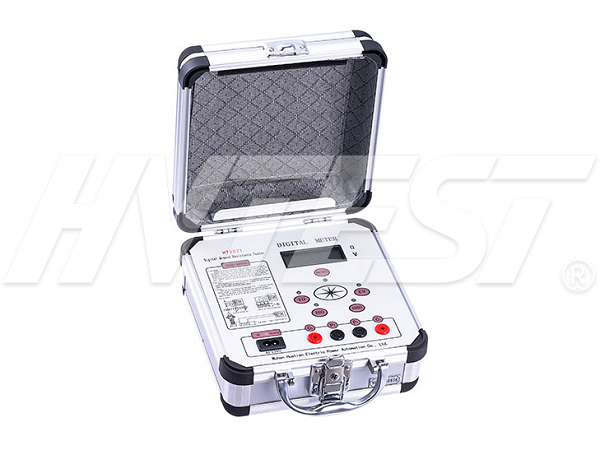Detection Technology
Use a high voltage tester or a megohmmeter?
Should I use a high voltage tester or a megohmmeter?
When should I use a high-voltage tester and when should I use a megohmmeter? There is no such simple answer to this seemingly simple question, because the difference lies not in the function of each tool, but in the expected result.
Let's take a look at the functions of each device first:
High-voltage tester (short-circuit means high potential or high voltage) is a term used to verify electrical safety testing equipment for electrical insulation in finished electrical appliances, cables or other wired components, printed circuit boards, motors, and transformers.
A megohmmeter is a special type of ohmmeter used to measure the resistance of insulators.
Essentially, both the tweeter and the megohmmeter do the same thing, but the results are quite different. Both instruments apply a relatively high voltage on the insulating layer and absorb leakage current through the insulating layer, which are equivalent to their insulating properties and conditions. However, megohmmeters can provide operators with measurements, and high water levels can take measures.

When to use a megohmmeter
A megohmmeter measures very small currents, typically in nano-amps, allowing it to pass through imperfections and deterioration of insulating materials. According to Ohm's law, it converts it into a resistance reading. These are usually megaohms. It is generally considered that anything less than 1MΩ cannot be used.
Once the operator uses the megohmmeter to obtain a reading, he/she must decide whether the equipment under test should continue to be used, cleaned, repaired or scrapped. Because it only uses a few milliamps of test current, the megger has limited power and will not damage the insulation. This is important because the most effective use of megohmmeters requires repeated routine testing to establish life cycle trends and perform preventive maintenance.
When to use a high voltage tester tester
In contrast, a high-voltage tester uses higher voltages and currents. Although it can provide measurements, its main function is to identify and kill weak currents; for example, by breaking weak currents before costly failures occur at work Insulate to stop edge equipment. It can be tested under DC or AC voltage.
The item under test should be able to withstand the applied voltage; however, compromises can be made in the "reminder" test. The tester has a voltage and ammeter, as long as the insulation is "durable", the two are expected to rise simultaneously. When the current starts to rise above the voltage, the test will suddenly stop, and then increased damage will occur. Then the item under test needs to be repaired.
Choose the right test equipment
Choosing between a high-voltage tester or a megohmmeter for testing can actually boil down to what you are testing, the voltage and current you need to test, and some personal preferences.
If you are looking for measurements to track the life cycle trends of your equipment, then a megohmmeter is your tool.
However, if you want to really emphasize your device under test to determine whether it still meets the standards and operates safely, then the high voltage test will help you take more decisive action.
Megger to measure cable insulation resistance | 2020/8/19 | reading840time Dry-type transformer maintenance checklist | 2020/8/18 | reading1271time return

